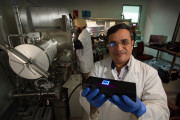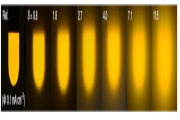 2020-06-12
2020-06-12
Display technologies keep progressing with new solutions coming up to tackle Mini LED and Micro LED production difficulties and new materials using to create OLED display. Now, scientists are using recycled human hair to develop flexible OLED displays. Researchers from Queensland University of Technology (QUT) and Griffith University in Austria have teamed up with a barbershop and develop a method to turn human hair into OLED display. The research was published in Advanced Materials. (Image: Queensland University of Technology) The small hair ...
Continue reading →
 2018-10-29
2018-10-29
Researchers at KAIST have achieved high efficiency with OLED without using macroscopic lens. They used an external scattering medium to achieve an external quantum efficiency (EQE) of more than 50 percent in OLED stimulation. The research, led by Professor Seunghyup Yoo and PhD candidate Jinouk Song, was published in Nature Communications on August 10th, 2018.
Continue reading →
 2020-06-12
2020-06-12
 2018-10-29
2018-10-29